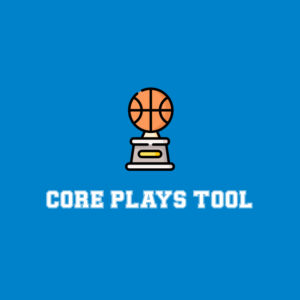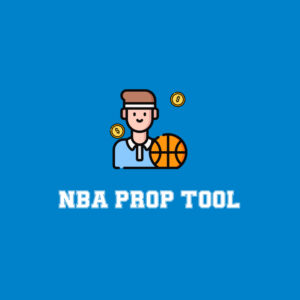
Our long national nightmare is over, as the 2025 NFL Draft is finally arriving Thursday night. And, with free agency more or less done with and Aaron Rodgers finally deciding not to make a decision, we’ve got a fairly clear view of each team’s position entering the draft.
This probably isn’t the first “team needs” article you’ve read this offseason. It may not even be the first team needs article you’ve read this offseason at FTN Fantasy, as Tyler Loechner and Colin McTamany have been going through their NFL Draft Wish Lists over the past month – they’re well worth checking out. But today, we’ll look at each team’s biggest need through a DVOA lens, showing what our numbers say about each team’s weakest position at the moment.
We’ll also list some options projected to be available for them, but we’re not just limiting ourselves to the first round. Just because something is your team’s biggest need doesn’t mean that they must reach to fill it with their first pick. Especially if it’s a position of lesser value (i.e., running back or off-ball linebacker) or somewhere where this draft isn’t particularly strong (i.e., quarterback or safety), it often makes sense to go with the best player available in the first round and go for need with a later pick. With that in mind, we’ll list some options available with each team’s first pick on Day 2, as well.
Tennessee Titans: Quarterback (But Actually Edge Rusher)
You hopefully don’t need advanced stats to tell you that anyone currently with Will Levis as their starting quarterback (DVOA in 2024: -32.0%) is in the market for a new quarterback. At the same time, we are as sure as we can reasonably be that it will only be a need for about 15 minutes after the draft actually kicks off. DraftKings currently has the Titans with -20,000 odds to take Miami quarterback Cam Ward. Ward is first in our QBASE projections this year by a fairly significant amount, though he’s well behind where Caleb Williams was last year.
Assuming the Titans don’t shock the world, their biggest need will then shift to edge rusher. The Titans were a respectable 17th with a 7.3% adjusted sack rate and 21st with a 30% pressure rate, but they were third-last with just 71 quarterback hits. A great amount of that pressure came from Justin Simmons in the interior, while Harold Landry has taken his 15 quarterback hits and 33 pressures to New England. Arden Key is better than you might think, but he’s a complementary piece and not a star.

Potential Round 1 Picks: Ward will be the pick.
Potential Round 2 Picks: Tennessee’s James Pearce Jr. ranked sixth in SackSEER, with a projected 19.3 sacks in his first five seasons. Oregon’s Jordan Burch was right behind him at 18.6. Pearce is the speedy, explosive one, while Burch has the larger frame, so it depends a little on what you’re looking for.
Cleveland Browns: Quarterback
Deshaun Watson didn’t work, with a -51.1% passing DVOA last year, the only season in which he was even healthy enough to qualify. He’s also injured and may miss the entire 2025 season, leaving Kenny Pickett as their projected starter. Pickett did manage a 1.7% passing DVOA in Pittsburgh in 2023, so you could theoretically do worse, but he’s already failed as a starter and is a competent backup, at best. The shambling corpse of Joe Flacco (-8.0% DVOA in 2024) may make this not the worst quarterback room in the league, but it’s in the conversation.
The question is whether Colorado’s Shedeur Sanders is worth the second overall pick, or if the Browns would be better served drafting someone like Abdul Carter or Travis Hunter, who are higher on draft boards, and then either wait until Day 2 or try to trade back in to fill the need. Sanders is the second-ranked quarterback in our QBASE projections, but that’s at least in part because of the weakness of the overall class; he would have ranked fourth a year ago behind Caleb Williams, Jayden Daniels and J.J. McCarthy.
Potential Round 1 Picks: Sanders is essentially tied with Mississippi’s Jaxson Dart in our QBASE projections, with just 0.03 TDYAR/A between the two despite the gap in their big board rankings Sanders is the most accurate quarterback in the class, but Dart has more functional mobility and a longer track record of success.
Potential Round 2 Picks: The pickings get slim after the top three. Alabama’s Jalen Milroe is fourth in QBASE at -0.44 TDYAR/A, which would have put him below all six first-round quarterbacks from 2024. Ohio State’s Will Howard is fifth after his breakout year, while 97-year-old veteran Tyler Shough of Louisville is sixth. You do not want to be the team taking the fourth quarterback on the board this year.
New York Giants: Quarterback
The national nightmare of Daniel Jones (-16.4% passing DVOA in 2024) is over, and the Giants can finally move on from that albatross of an extension that had then pinned down for the past few years. While this is the third team in a row with quarterback as their biggest need, the Giants are much better off than the Titans or Browns. They brought in Russell Wilson (-1.5%) and Jameis Winston (-15.8%), both of whom are more credible than a Levis or Pickett. Still, neither should be in the plans for the 2026 Giants, so when Joe Schoen says that it’s no longer “mandatory” for New York to take a quarterback, take it with at least a grain of salt.
They’ll need a first-round-caliber passer this year or next; it’s just entirely possible they’ll pick “next” with the 2026 quarterback class projecting on paper to be better than this year. That would free them up to take an Abdul Carter or Travis Hunter this year and hope they’ll be in a better position 12 months from now. That’s the extra flexibility a Wilson or Winston gives you.

Potential Round 1 Picks: Sanders is essentially tied with Mississippi’s Jaxson Dart in our QBASE projections, with just 0.03 TDYAR/A between the two despite the gap in their big board rankings Sanders is the most accurate quarterback in the class, but Dart has more functional mobility and a longer track record of success.
Potential Round 2 Picks: The pickings get slim after the top three. Alabama’s Jalen Milroe is fourth in QBASE at -0.44 TDYAR/A, which would have put him below all six first-round quarterbacks from 2024. Ohio State’s Will Howard is fifth after his breakout year, while 97-year-old veteran Tyler Shough of Louisville is sixth. You do not want to be the team taking the fourth quarterback on the board this year.
New England Patriots: Offensive Tackle
Drake Maye was under pressure on 34.4% of his dropbacks last season, the seventh-highest rate in the league. The Patriots also ranked 27th in adjusted line yards at 4.05, as they didn’t particularly excel at opening holes, either. Sometimes, this isn’t rocket science. You found a franchise quarterback, and now you must protect him. Signing Morgan Moses and Garrett Bradbury means the Patriots could just use two more offensive linemen rather than four, with Vederian Lowe and Cole Strange still the weak points on the left side of the line. Whether tackle or guard is stronger in this class really depends on how many of the top tackles you expect to stay tackles rather than move inside, but the Pats should have options to replace either.
Potential Round 1 Picks: Missouri’s Armand Membou is generally considered the top tackle in the class, though at only 6-foot-4, some scouts say he’s better off moving inside to play guard. LSU’s Will Campbell has been connected to the Patriots several times, with Mike Vrabel specifying that he views him as a left tackle, though some scouts say that with just 33-inch arms, he may be better off moving inside to play guard. Texas’ Kelvin Banks was the LombardI Award winner and another possible option, though some scouts say that his relative lack of length may mean he’s better off moving inside to play guard. A lot of that going around atop the class this year.
Potential Round 2 Picks: Boston College’s Ozzy Trapilo is a better pass protector than run blocker at the moment; if he adds a few more pounds to his frame he could graduate from solid swing tackle to potential starting option. Minnesota’s Aireontae Ersery has more ideal size and wowed at the combine, though that athleticism doesn’t always show up on the field.
Jacksonville Jaguars: Defensive Tackle
I was tempted to buck conventional wisdom and put center here, with Mitch Morse retiring and ex-Buccaneer Robert Hainsey currently penciled in as the starter. Hainsey was brought in because of his familiarity with Liam Coen, but the Buccaneers drafted Graham Barton in 2024 because they thought they needed to improve the position. It feels like Jacksonville has attempted to solve their lack of a starting center by paying a backup center starting money, continuing their streak of four starting centers in the past five seasons. But there is no Barton in this year’s draft, so instead we’ll instead go with what everyone else is saying.
The Jaguars ranked 27th in defensive adjusted line yards with just 4.66 and had the lowest adjusted sack rate in the league at 5.2%. They were particularly poor in power running situations, allowing a 78% success rate. When you can’t stop the run or generate any interior pressure, it’s time to boost the position, and the Jaguars haven’t added anyone at tackle yet.
Potential Round 1 Picks: Michigan’s Mason Graham is by far the betting favorite for Jacksonville with the fifth pick and would slide right into the starting three-tech role. Any other first-round pick, such as Oregon’s Derrick Harmon, Mississippi’s Walter Nolen or Michigan’s Kenneth Grant, would be a major stretch this early.
Potential Round 2 Picks: Day 2 defensive tackles are everywhere. At least one of T.J Sanders (South Carolina), Darius Alexander (Toledo), Omarr Norman-Lott (Tennessee) or Alfred Collins (Texas) should be available when the Jaguars pick in the second round, so they could justify going with a slipping Abdul Carter and addressing tackle later.
Las Vegas Raiders: Running Back
Advising a team to draft a first-round running back causes us analytic types to break out in hives, but the Raiders’ shell game of a running back room last season was depressing to watch. Las Vegas was second-to-last with a -21.8% rushing DVOA, and their starter at the moment would likely be Sincere McCormick splitting time with Raheem Mostert. When adding a 33-year-old running back who was limited to just 85 carries last year counts as a significant upgrade, it’s time to hit the draft.

Potential Round 1 Picks: Boise State’s Ashton Jeanty is, in fact, the real deal. His BackCAST projection of +114.9% is leaps and bounds ahead of anyone else this year, and he would have been first in 2024, as well. He’s the only back worth picking in the top 10, though watch for the possibility of trading back and taking North Carolina’s Omarion Hampton if a quarterback bidding war breaks out.
Potential Round 2 Picks: The consensus big board likes Ohio State’s TreVeyon Henderson the most out of the non-Jeanty or Hampton backs, though BackCAST is more skeptical. Henderson’s numbers still come out fine, but our model actually prefers Arizona State’s Cam Skattebo, who brings excellent receiving chops to go along with his tackle-breaking powers. Skattebo is way, way further down the draft board, however, so a team using a top-40 pick is more likely to end up following conventional wisdom and going with Henderson or teammate Quinshon Judkins.
New York Jets: Tight End
Were you expecting quarterback? Justin Fields (2024 passing DVOA: -4.2%) is by no means a long-term solution at the position, and they’d have to consider Sanders if he slips past the first few picks. But the Jets are really light on playmakers for a new quarterback to work with. Fields is, at least, a competent backup-stroke-bridge level player. The tight end depth chart at the moment starts with Jeremy Ruckert and his -41.3% receiving DVOA last year. Maybe pass on the QB this year and get some help for next year’s better class.

Potential Round 1 Picks: Penn State’s Tyler Warren leads the loaded tight end class on most big boards, and we like him, too. However, the top tight end in our TRAVIS projections is actually Michigan’s Colston Loveland. It makes sense that Loveland would be projected with more receiving yards as he’s a converted wideout; Warren’s still the better pick if you want an all-around tight end who can also block.
Potential Round 2 Picks: Third and fourth in our TRAVIS projections are LSU’s Mason Taylor and Miami’s Elijah Arroyo. They’d help out a potential first-round Jaxson Dart-type if the Jets feel they need to address quarterback right here and right now.
Carolina Panthers: Free Safety
The Panthers ranked 31st allowing a 24.9% DVOA to opposing tight ends last season, and their 115.2% DVOA allowed on passes to the deep middle was also second from the bottom. Adding more pass rushers to replace the departed Brian Burns is probably a better strategy at the top of the draft, but the combination of Jadeveon Clowney, D.J. Wonnum and Patrick Jones II is likely less remedial than Demani Richardson at starting free safety. A safety who can also move in and play some slot corner would be an ideal find for the back end of a defense that gave up the most points in a single season in NFL history.
Potential Round 1 Picks: Likely none. But, since the Panthers don’t pick again until No. 57, they’d likely have to use their first-round pick as part of a trade back if they wanted South Carolina’s Nick Emmanwori or Georgia’s Malaki Starks. Probably best to save it for later, then, and add a pass rusher in Round 1.
Potential Round 2 Picks: Notre Dame’s Xavier Watts may be the best ball-hawking safety in the class, though don’t ask him to tackle much. Penn State’s Kevin Winston is another option around this point, but Watts fits what Carolina wants to do much more.
New Orleans Saints: Cornerback (…or Quarterback?)
The Saints are the wild card right now, as we don’t really know what’s up with Derek Carr‘s shoulder. The Saints clearly thought that Carr’s shoulder injury wasn’t going to jeopardize his 2025 season when they restructured his contract, and there’s rumors that Carr’s shoulder is being aggravated by a severe case of you-changed-the-head-coach-itis, which sometimes clears up unexpectedly. We’ll get more clarity if the Saints use a first-round pick on a passer. Before Carr’s injury, we would have listed cornerback as their top need, with both Marshon Lattimore and Paulson Adebo out of town. Even with them, New Orleans ranked 24th allowing 49.89 EPA to receivers out of the slot.
Potential Round 1 Picks: The Saints only draft highly athletic prospects, with just one non-QB pick since 2019 having a Relative Athletic Score below 7.5. That puts them much more in line to consider Texas’ Jahdae Barron rather than Michigan’s Will Johnson, as Johnson has yet to run a 40 thanks to a combination of a hamstring injury and not wanting to put a slow number on his resume.
Potential Round 2 Picks: Mississippi’s Trey Amos and Notre Dame’s Benjamin Morrison should be available midway through the second round. Morrison athleticism fits what the Saints normally look for better, but he’s still recovering from hip surgery.
Chicago Bears: Defensive Front
The Bears’ offseason spending spree has really freed them up for the draft, as they’ve at least somewhat addressed most of their positions of needs. They came into the offseason with the offensive line being top priority, and another tackle wouldn’t kill them, but adding three players there does slide it slightly down the priority list. Instead, they could instead their front seven, where they added Grady Jarrett and Dayo Odeyingbo but could use more help. Chicago’s advanced pass rush numbers a year ago look OK – a 34% pressure rate, seventh in the league – but finishing was an issue. No one player managed six sacks and Montez Sweat is the only returning player with more than 40 pressures. When in doubt, adding extra bodies to your pass rush never hurts, with an emphasis on the interior this
Potential Round 1 Picks: The Bears are in a little bit of a dead zone at pick 10 when it comes to interior linemen. Oregon’s Derrick Harmon, Mississippi’s Walter Nolen or Michigan’s Kenneth Grant would be minor stretches this early, and while Georgia’s Mykel Williams is fifth in SackSEER, he’s also the first-round edge rusher most likely to bust per our numbers. A best player available strategy or trade down makes more sense.
Potential Round 2 Picks: Day 2 defensive tackles are everywhere. At least one of T.J Sanders (South Carolina), Darius Alexander (Toledo), Omarr Norman-Lott (Tennessee) or Alfred Collins (Texas) should be available when the Bears pick in the second round, with Sanders being the one which best fits the athletic prototypes Ryan Poles seems to favor.
San Francisco 49ers: Defensive Tackle
The worst interior line in the league at the moment may reside in San Francisco, where Jordan Elliott and Evan Anderson are penciled in as starters. This was a team that finished 22nd in defensive line yards and had issues tackling before losing Javon Hargrave and Maliek Collins. Robert Saleh needs something to work with, and that’s a more pressing need than future-proofing against Trent Williams‘ retirement or another Christian McCaffrey injury.
Potential Round 1 Picks: The 49ers are in a little bit of a dead zone at pick 11 when it comes to interior linemen. Oregon’s Derrick Harmon, Mississippi’s Walter Nolen or Michigan’s Kenneth Grant would be minor stretches this early, which is why most mocks have San Francisco taking a tackle or corner first.
Potential Round 2 Picks: Day 2 defensive tackles are everywhere. At least one of T.J Sanders (South Carolina), Darius Alexander (Toledo), Omarr Norman-Lott (Tennessee) or Alfred Collins (Texas) should be available when the 49ers pick in the second round. Sanders, in particular, would be the kind of disruptive pass rushing interior presence they’ve sorely been lacking.
Dallas Cowboys: Running Back
Dallas slogged along to a -11.2% rush DVOA, 22nd in the league in 2024. Rico Dowdle did manage a positive DVOA at 5.3%, but he’s gone, with both newcomers Javonte Williams (-19.3%) and Miles Sanders (-6.7%) finishing well below average. If you’re going to run a Brian Schottenheimer offense, you’d better have a superstar at running back to make it work.

Potential Round 1 Picks: North Carolina’s Omarion Hampton had back-to-back 1,500-yard seasons and is an above-average threat out of the backfield, even at 221 pounds. He’s second in our BackCAST projections and very likely the only first-round quality running back available when Dallas goes on the clock with the 12th pick.
Potential Round 2 Picks: The consensus big board likes Ohio State’s TreVeyon Henderson the most out of the non-Jeanty or Hampton backs, though BackCAST is more skeptical. Henderson’s numbers still come out fine, but our model actually prefers Arizona State’s Cam Skattebo, who brings excellent receiving chops to go along with his tackle-breaking powers. Skattebo is way, way further down the draft board, however, so a team using a top-40 pick is more likely to end up following conventional wisdom and going with Henderson or teammate Quinshon Judkins.
Miami Dolphins: Secondary
Chris Grier has never used a first-round pick on a player at a non-premium position, and he probably won’t break that streak by taking a first-round safety in 2025. There are needs on the offensive and defensive lines at more premium positions, and he’s publicly stated that he’s OK with Miami’s current group. But both Jovan Holland and Jordan Poyer left this offseason, and while Ifeatu Melifonwu is an adequate strong safety replacement, Ashtyn Davis was being phased out of the Jets’ lineup over the past few seasons. Add in Jalen Ramsey now asking for a trade, and a defense which ranked 26th on deep passes with a 35.6% DVOA now needs more reinforcements.
Potential Round 1 Picks: South Carolina’s Nick Emmanwori matches the uber-athletic style of player Miami covets; he has the highest Relative Athletic Score in the draft. At the same time, he’s more of a strong safety type than a cover safety/corner like they really need. The top option there is Georgia’s Malaki Starks, but he put up terrible agility and explosion numbers in testing. Miami likely will look elsewhere in the first round.
Potential Round 2 Picks: Notre Dame’s Xavier Watts may be the best ball-hawking safety in the class, though don’t ask him to tackle much. Penn State’s Kevin Winston is another option around this point, but Watts fits what Miami needs more.
Indianapolis Colts: Tight End
Anthony Richardson gets one more year to prove he’s the real deal. Helping him out with a big, reliable target over the middle of the field would be a major plus. Drew Ogletree is penciled in as Indianapolis’ top tight end, and he’s never had more than 21 targets in a season. The Colts have a lot of bodies at the position – Mo Alie-Cox, Jelani Woods, Will Mallory – but no one really even guaranteed a roster spot, much less a game changer. Richardson had a -16.9% passing DVOA targeting players line up tight or in the slot, second amongst qualified passers. He needs help!

Potential Round 1 Picks: With Tyler Warren off the board, Michigan’s Coleston Loveland becomes the tight end of choice for teams with mid first-round picks. Loveland actually leads our TRAVIS ratings for tight end receiving production, which makes sense when you consider he’s a converted wide receiver. A big slot guy, rather than a true in-line tight end.
Potential Round 2 Picks: Third and fourth in our TRAVIS projections are LSU’s Mason Taylor and Miami’s Elijah Arroyo, and both are likely to be available in the middle of Round 2 if you’re concerned about the poor track record of first-round tight ends.
Atlanta Falcons: Edge Rusher
The Falcons have needed to boost their pass rush for nearly half a decade at this point. They have 169 sacks since 2019 which doesn’t just rank last, it’s almost 30 sacks behind the next-worst team. In 2024, they got pressure just 23% of the time, second-worst ahead of Carolina, and their 5.7% adjusted sack rate ranked 30th.
Potential Round 1 Picks: There should be plenty of pass rushers to pick from in the middle of the first round. SackSEER’s favorite is Texas A&M’s Shemar Stewart, though there’s fear he’s a combine wunderkind and our projections may be overrating him. Marshall’s Mike Green, Boston College’s Donovan Ezeiruaku and Georgia’s Mykel Williams all could be options here as well, ranking third to fifth in our projections.
Potential Round 2 Picks: Edge rusher is the deepest position in the draft, and that should continue into Round 2. Oregon’s Jordan Burch ranks seventh in SackSEER and is the top prospect who could realistically fall, but Arkansas’ Landon Jackson, Texas A&M’s Nic Scourton and UCLA’s Oluwafemi Oladejo are all reasonable picks
Arizona Cardinals: Wide Receiver
Yes, they used a first-round pick on Marvin Harrison Jr. last year, and he began to turn things on in the second half of his rookie season. But what the Cardinals could really need is a burner; someone who could take the top off of a defense and open up some big play possibilities. Ideally, this burner would play in the slot and replace the Michael Wilson/Greg Dortch spot, but beggars can’t be choosers. Kyler Murray ranked 34th with an aDOT of 6.8, and while some of that is by design with lots of screens and quick outs to Trey McBride, they could do so much more.

Potential Round 1 Picks: Texas’ Matthew Golden is the fastest receiver coming out this year and third in our Playmaker Projections. Having him as your second wide receiver, stretching the field and allowing Harrison and McBride to roam in the space opened up underneath, is enticing. It’s a tough sell to use first-round picks in back-to-back years on receiver, but that would project to be a very, very scary passing attack.
Potential Round 2 Picks: Sixth to eighth in our projections are Mississippi’s Tre Harris and Iowa State’s Jaylin Noel and Jayden Higgins. Of the three, Noel fits what Arizona wants the most with his straight-line speed, while Higgins fits least as more of a reliable possession guy, but any of the three would be an improvement on what the Cardinals currently have.
Cincinnati Bengals: Safety
Really, it’s hard to argue against any spot on Cincinnati’s defense as their biggest need, with so much money being used on the offensive side of the ball. Any talent is good talent for last year’s 27th-ranked defense. If the rumored Trey Hendrickson trade does happen, edge rusher is obviously their biggest need, and they should absolutely draft someone there anyway, with Hendrickson’s contract expiring after the year. That being said, if Hendrickson is on the 2025 Bengals, then the back end of their defense is a bigger issue. Geno Stone, and Jordan Battle both struggled last season, while Vonn Bell was not re-signed. Battle is young enough to get another chance, as he flashed better in 2023, but Stone was an expensive flop. The Bengals ranked 29th against third receivers and 25th against tight ends and were below average covering deep shots in general. A new free safety is very much needed.
Potential Round 1 Picks: They should probably go ahead and find a running-mate/replacement for Hendrickson in round 1. South Carolina’s Nick Emmanwori is the top safety on most boards, but he’s more of a strong safety type than the cover safety/corner they really need. The top option there is Georgia’s Malaki Starks, who is both a much better fit for what they want to do and more of a stretch at pick 17.
Potential Round 2 Picks: Notre Dame’s Xavier Watts may be the best ball-hawking safety in the class, though don’t ask him to tackle much. Penn State’s Kevin Winston is another option around this point, but Watts fits what Cincinnati needs more.
Seattle Seahawks: Interior Offensive Line
Sam Darnold was 10th in the league with a 58.8% DVOA when not pressured. He fell to 20th at -59.1% when pressured, and that still is a smaller drop than he’s historically had. Remember him seeing ghosts in New York? They’ve never really gone away. Going from the mobile Geno Smith to Darnold is an interesting decision behind Seattle’s offensive line, which ranked 26th in adjusted sack rate last season. Charles Cross and Abraham Lucas are fine at tackle, but all three interior linemen need to be upgraded.
Potential Round 1 Picks: The top two guards available are Alabama’s Tyler Booker and North Dakota State’s Grey Zabel, and which one you prefer depends on what your team wants. Booker is the more powerful, less athletic type while Zabel is the hyper-athletic type who could play all five positions on the line. Klint Kubiak runs a lot more zone concepts than Seattle is used to, so the more athletic Zabel may be their pick of choice.
Potential Round 2 Picks: Jonah Savaiinaea was a tackle at Arizona, but he should move inside to guard in the NFL, especially if he gets go to a zone scheme like the one Kubiak runs. As for centers, Georgia’s Jared Wilson is likely the only one to be worth a top-100 pick.
Tampa Bay Buccaneers: Linebacker
Re-signing Lavonte David means that the Buccaneers don’t have an entire void in the center of their defense, but SirVocea Dennis is penciled in next to him at the moment. Even last year, with David lined up next to K.J. Britt, the Buccaneers could not cover the middle of the field – 27th in DVOA against tight ends, 28th against running backs, 21st against throws to the short middle and 27th against throws to the deep middle. The Bucs need someone who can support David this year and replace him in the very near future.
Potential Round 1 Picks: The dream is for Alabama’s Jihaad Campbell to be here, but that seems unlikely with the Colts and Falcons picking in front of Tampa. If Campbell’s gone, there isn’t really a first-round linebacker option left, and Tampa can address corner or edge rusher instead.
Potential Round 2 Picks: UCLA’s Carson Schwesinger is best suited for a MIKE or WILL role, but he should work in the middle Tampa’s defense without too much of a hitch. He’s good enough in coverage, though his calling card is weaving around blocks and filling gaps with excellent instincts.
Denver Broncos: Running Back
Any sort of skill position addition would be great for Denver to add weapons around Bo Nix. Receiver will be a bigger need in 2026, with Courtland Sutton‘s contract expiring, but Denver was 24th with a -12.1% rushing DVOA last season and have added nothing to the position. Jaleel McLaughlin barely scraped his way to a positive rushing DVOA (3.7%) but was an utter non-factor in the receiving game; Sean Payton could use his next Alvin Kamara-type.

Potential Round 1 Picks: North Carolina’s Omarion Hampton had back-to-back 1,500 yard seasons and is an above-average threat out of the backfield, even at 221 pounds. He’s second in our BackCAST projections. Denver’s drafting late enough that there are other options they could try, with the pair of Ohio State running backs not being entirely out of the question, but Hampton would be the clear favorite.
Potential Round 2 Picks: The consensus big board likes Ohio State’s TreVeyon Henderson the most out of the non-Jeanty or Hampton backs, though BackCAST is more skeptical. Henderson’s numbers still come out fine, but our model actually prefers Arizona State’s Cam Skattebo, who brings excellent receiving chops to go along with his tackle-breaking powers. Skattebo is way, way further down the draft board, however, so a team using a Day 2 pick is more likely to end up following conventional wisdom and going with Henderson or teammate Quinshon Judkins.
Pittsburgh Steelers: Quarterback
It’s rare that the worst quarterback room in the league is drafting this late in the first round, but that is the world we find ourselves in. With Aaron Rodgers making a big announcement last week that he was not yet ready to make any big announcements, Pittsburgh is in an unenviable bind. The best thing we can say about Mason Rudolph and Skylar Thompson is that each has spot-starting experience. Rudolph did set a career high last year in Tennessee with a -17.5% passing DVOA, while Thompson hit -17.4% in limited action in 2022. Feel the excitement.

Potential Round 1 Picks: With the Derek Carr injury, it’s likely the only first-round caliber quarterback who could fall to the 21st pick would be Mississippi’s Jaxson Dart. QBASE is decently high on Dart, at least for this class, having him third in the class and only slightly behind Shadeur Sanders for number two. His 0.16 TDYAR/A projection is the 11th best for quarterbacks in the last five years, just ahead of C.J. Stroud and Drake Maye. His lack of size and his simpler college offense are red flags, but there are only three quarterbacks in the class we project with less than a 50% chance of becoming a bust, and Dart is third of three.
Potential Round 3 Picks: The Steelers do not have a second-round pick thanks to the DK Metcalf trade. ESPN’s projections have just one of the top six quarterbacks with a greater than 50% chance of being on the board when Pittsburgh picks at 83 – Ohio State’s Will Howard. Howard’s coming off a breakout season and a national championship, but he was not considered a top-100 pick during his time at Kansas State. His -0.57 TDYAR/A projection is fifth in the class, but he’s likely the best shot Pittsburgh has if they wait until the third round to try to find a starter.
Los Angeles Chargers: Tight End
The Chargers need one more playmaker to really make their offense flow. Their overall offensive pass DVOA was good at 32.8%, eighth in the league. They bogged down in the red zone, however, falling to -5.1%, 23rd in the league, as most of their wideouts struggled to get open. They were held to 17 points or fewer seven times, which isn’t good enough for a team trying to take that next step into serious contender mode. A receiver or tight end would work, but neither Tyler Conklin (-7.6% receiving DVOA last year) nor Will Dissly (4.7%) scream matchup advantage.
Potential Round 1 Picks: Slim on the ground. Jim Harbaugh would love to reunite with Colston Loveland after they won the national title together in 2023, but he’s shot up enough on draft boards that he’s frequently going in the middle of the first round to the Colts or Falcons. It’s not worth giving up extra draft capital to go get him, so it’s a case of crossing your fingers and hope he falls or just address defensive line or wide receiver and get a tight end later.
Potential Round 2 Picks: Third and fourth in our TRAVIS projections are LSU’s Mason Taylor and Miami’s Elijah Arroyo, and both are likely to be available in the middle of Round 2 if you’re concerned about the poor track record of first-round tight ends.
Green Bay Packers: Wide Receiver
The Packers boast a small flotilla of WR2s, and rode them to a 38.4% passing DVOA last season. But they’re missing a true game-breaking player who forces defenses to single him out in coverage, and Christian Watson‘s torn ACL means they’re lacking a deep threat. This is an odd need in that it’s really first round or bust. Green Bay really doesn’t need more depth at the position, but a stud would help take them to the next level. A first-round wide receiver would be an oddity for Green Bay, however, as they haven’t picked one since 2002.

Potential Round 1 Picks: The best match between Packers’ need and their late draft position is Ohio State’s Emeka Egbuka. He hits the size and athleticism benchmarks the Packers care so much about, even if he isn’t the burner that would be ideal for them. The Packers have also generally cared about career production for their wideouts, so his coming out as a senior won’t bug them as much as it bothers Playmaker, which drops him to fifth behind the four top names coming out as juniors. Playmaker would prefer Missouri’s Luther Burden, who is slightly more likely to fall.
Potential Round 2 Picks: Sixth to eighth in our projections are Mississippi’s Tre Harris and Iowa State’s Jaylin Noel and Jayden Higgins, all of whom could be available with the 54th pick. All three have Relative Athletic Scores of 9.23 or higher, but Noel, with his 4.39-second 40, is the best option if Green Bay wants to make a one-to-one replacement for Watson.
Minnesota Vikings: Cornerback
Really, Minnesota’s biggest need is more draft picks, as they only have four. Apart from that, while Minnesota did boast the best pass defense in the league last season with a -12.8% DVOA, a lot of that game from Brian Flores’ pass rush throwing everyone off balance. They ranked just 13th against opposing WR1s with a -5.5% DVOA, so teams found some success when they were able to absorb the defenders coming from every which angle. Besides, if you’re going to send extra pass rushers a league-high 39% of the time, it’s nice to have a shutdown corner behind them to clean everything up.
Potential Round 1 Picks: The top two options likely to be available when Minnesota is on the clock are Kentucky’s Maxwell Hairston and Florida State’s Azareyah Thomas. Hairston’s speed is hard to top, running a 4.28 40 at the combine and is likely the better of the two in a zone-heavy scheme, with Thomas being more of a press-man guy. No team ran less man coverage than the Vikings in 2024, so Hariston might end up being the perfect fit.
Potential Round 3 Picks: The Vikings do not have their own second- or third-round picks thanks to their trade ups to get Dallas Turner last year, so their second pick comes at the end of the third round from their Kirk Cousins compensatory selection. That leaves them looking at sniping some of the best Day 3 picks, with Louisville’s Quincy Riley being an intriguing developmental prospect – good speed and athleticism, with a need to be coached up in terms of awareness and decisiveness.
Houston Texans: Offensive Line
Laremy Tunsil and Kenyon Green have been traded away, while Shaq Mason was released. That’s three out of five starting linemen from a year ago, so yeah, it’s safe to say that an overhaul is in process on the offensive line. It’s a much needed one, too, as C.J. Stroud faced the second-highest pressure rate at 37% last year, and only Deshaun Watson and Russell Wilson were more likely to face pressure from four-man rushes. The Texans have already added Cam Robinson, Trent Brown and Laken Tomlinson this offseason, but only Robinson appears to be a locked-in starter.
Potential Round 1 Picks: If they’re looking for a tackle, Ohio State’s Josh Simmons and Oregon’s Josh Conerly are the biggest names likely to fall to the 25th pick. If they’d prefer to boost the interior line, Alabama’s Tyler Booker and North Dakota State’s Grey Zabel could be around. The least likely pick here is Zabel, as Nick Cesario has drafted just one player from a non-power conference, and that was Tank Dell out of hometown Houston. They draft a lot out of Alabama, so maybe the smart money is on Booker here.
Potential Round 2 Picks: Lots of potential options at tackle, led by Boston College’s Ozzy Trapilo, Texas’ Cameron Williams and William & Mary’s Charles Grant. At guard, the best option will likely be Purdue’s Marcus Mbow, moving inside from tackle. Out of this group, Trapilo is the most likely to be ready to contribute right from the start.
Los Angeles Rams: Linebacker
Troy Reeder and Omar Speights are penciled as the starting linebackers for the Rams, the result of years of ignoring the position. Los Angeles’ defense was soft up the middle last season – sixth in the league with 118 missed tackles, 19th with 1.23 second-level rush yards allowed, and 2.6 win yards allowed on running plays – yards after contact or missed tackles. The Rams wisely don’t invest a lot of money at the position, but you do occasionally have to do something.
Potential Round 1 Picks: 26th is an odd spot to be looking for an off-ball linebacker, with Alabama’s Jihaad Campbell likely to be long gone. It’s a bit early for UCLA’s Carson Schwesinger, but he won’t last until the Rams’ next pick. A trade back to add some more draft capital and scoop up the instinctive Schwesinger at the top of Day 2 might be their best outcome.
Potential Round 3 Picks: The Rams do not have a second-round pick thanks to the trade up for Braden Fiske last year. The end of the third round would put them in range for South Carolina’s Demetrius Knight, who has been in college since 2019. He may be the most fundamentally sound tackler in the class, and that’s what the Rams desperately need.
Baltimore Ravens: Cornerback
The Ravens ranked 29th against opposing WR1s last year with a 21.0% DVOA, allowing a league-high 97.6 yards per game to them. They also lost Brandon Stephens, though that may be addition by subtraction in the secondary. You can get by with Nate Wiggins and Chidobe Awuzie at boundary corner, but you could also do a lot better.
Potential Round 1 Picks: The top two options likely to be available when Baltimore is on the clock are Kentucky’s Maxwell Hairston and Florida State’s Azareyah Thomas. Hairston’s speed is hard to top, running a 4.28 40 at the combine and is likely the better of the two in a zone-heavy scheme, with Thomas being more of a press-man guy. Baltimore was the median team in terms of man coverage in 2024, running it 50.2% of the time, so they could go either way, but Thomas looks like he might be the better fit.
Potential Round 2 Picks: Iowa State’s Darien Porter slots in nicest at the end of the second round. He’s a one-year starter despite six years in college as he’s transitioned from wide receiver to cornerback, but he’s got potential out the wazoo and would at least make an impact on special teams as he continues to learn the nuts and bolts of the position.
Detroit Lions: Edge Rusher
Aidan Hutchinson is really good! After that, things get shakier. Marcus Davenport has never played a full season and has managed just six games over the last two years for Minnesota and Detroit. We saw Detroit’s depth get tested last year thanks to all the injuries, and they ranked 23rd with a 29% pressure rate, the worst among playoff teams. Hutchinson needs a new running mate.
Potential Round 1 Picks: Boston College’s Donovan Ezeiruaku ranked fourth in our SackSEER projections, coming off of a 16.5-sack season and a FBS-leading 69 pressures in his senior year. His size is an issue, but having a smaller, high-motor guy as a change of pace from Hutchinson isn’t a problem. Tennessee’s James Pearce Jr. is another option, ranking sixth in SackSEER after clocking in the best 40 for an edge rusher at the combine and showing explosiveness on tape.
Potential Round 2 Picks: Edge rusher is the deepest position in the draft, and that should continue into Round 2. Oregon’s Jordan Burch ranks seventh in SackSEER and is the top prospect who could realistically fall, but Arkansas’ Landon Jackson and UCLA’s Oluwafemi Oladejo are both reasonable picks.
Washington Commanders: Edge Rusher
Dante Fowler Jr. led Washington with 10.5 sacks last year; he’s in Dallas. None of their other edge rushers topped five sacks – Frankie Luvu had eight and rushes more than most off-ball linebackers, but he’s not really an edge rusher per se. Even with Fowler, the Commanders still ranked 22nd with a 30% pressure rate and fell to 24th and 25% when rushing just four. Adding Deatrich Wise is a start, but they could use more help.
Potential Round 1 Picks: Boston College’s Donovan Ezeiruaku ranked fourth in our SackSEER projections, coming off of a 16.5-sack season and a FBS-leading 69 pressures in his senior year. Size is a concern at just 6-foot-3 and 248 pounds, but his high-motor should translate to success. Tennessee’s James Pearce Jr. is another option, ranking sixth in SackSEER after clocking in the best 40 for an edge rusher at the combine and showing explosiveness on tape.
Potential Round 2 Picks: Edge rusher is the deepest position in the draft, and that should continue into Round 2. Oregon’s Jordan Burch ranks seventh in SackSEER and is the top prospect who could realistically fall, but Arkansas’ Landon Jackson and UCLA’s Oluwafemi Oladejo are both reasonable picks.
Buffalo Bills: Secondary
The Bills had a couple secondary spots where they were particularly vulnerable in 2024. They ranked 28th against WR1s and 29th against WR2s with DVOAs of 14.2% and 19.2%, respectively. They were 31st against throws to the middle of the field at 38.1%, and 23rd against throws to the deep middle at 71.4%. They traded Kaiir Elam to Dallas, bringing Tre’Davious White back to fill the gap. Another boundary corner would help, or a coverage safety with neither Damar Hamlin nor Taylor Rapp excelling there.
Potential Round 1 Picks: Georgia safety Malaki Starks would be a fun addition, as Bills cornerbacks coach Jahmille Adams was the one who recruited him in the first place. But addressing the coverage problems in the first round likely would mean a cornerback like Kentucky’s Maxwell Hairston or Florida State’s Azareyah Thomas instead.
Potential Round 2 Picks: Notre Dame’s Xavier Watts may be the best ball-hawking safety in the class, though don’t ask him to tackle much. He would be a more interesting fit for Buffalo than the late second-round corners like Iowa State’s Darien Porter, adding better playmaking ability to the back of the defense.
Kansas City Chiefs: Edge Rusher
We’re assuming, for the moment, that Trey Smith‘s long-term contract gets worked out and the Chiefs are happy with Jaylon Moore at left tackle; if either of those assumptions is wrong then offensive line jumps to the top of the list. Jerry Tillery‘s addition also shores up the interior defensive line enough to knock it down a rung, though more help next to Chris Jones is always useful. Instead, we’ll prioritize finding a better second pass rusher than Mike Danna. Kansas City ranked fourth with a 35% pressure rate, but a lot of that came from judicious blitzing. They fell to 12th and 29% when rushing just four.
Potential Round 1 Picks: Boston College’s Donovan Ezeiruaku ranked fourth in our SackSEER projections, coming off of a 16.5-sack season and a FBS-leading 69 pressures in his senior year. Size is a concern at just 6-foot-3 and 248 pounds, but his high motor should translate to success. Tennessee’s James Pearce Jr. is another option, ranking sixth in SackSEER after clocking in the best 40 for an edge rusher at the combine and showing explosiveness on tape.
Potential Round 2 Picks: Edge rusher is the deepest position in the draft, and that should continue into Round 2. Oregon’s Jordan Burch ranks seventh in SackSEER and is the top prospect who could realistically fall, but Arkansas’ Landon Jackson and UCLA’s Oluwafemi Oladejo are both reasonable picks.
Philadelphia Eagles: Secondary
The Eagles will likely use their first-round pick in the trenches, because they nearly always do – 10 of their 13 first-round picks under Howie Roseman had been on the offensive or defensive line, and we saw how that commitment paid off in the Super Bowl. What they really need, however, is a safety who can play in the slot as Darius Slay and C.J. Gardner-Johnson are both gone. Rumors abound of a post-draft handshake deal with Justin Simmons to fill that role, but rumors are just that until the ink dries, and you’d hate to pass on a playmaker in the draft only to see him end up with Buffalo or Cincinnati instead.
Potential Round 1 Picks: Another reason the Eagles likely won’t take a first-round safety: not a ton are projected to be available at the back of Round 1. The Eagles could hope that Malaki Starks drops to allow them to draft yet another Georgia Bulldog, but it’d be a surprise to him slip past the Vikings, Ravens and Bills. They could go with Notre Dame’s Xavier Watts as a ball-hawk, but it’s hard to see them prioritizing that over more beef up front.
Potential Round 2 Picks: Penn State’s Kevin Winston has dropped some after tearing his ACL early in 2024. He’s an explosive downhill safety with experience playing in the box – play fast, tackle clean, punish ball carriers. The value would be good here, but he’s not quite the coverage safety Philadelphia needs. He’d be a good developmental player to get in addition to signing Simmons, rather than a replacement for signing Simmons.








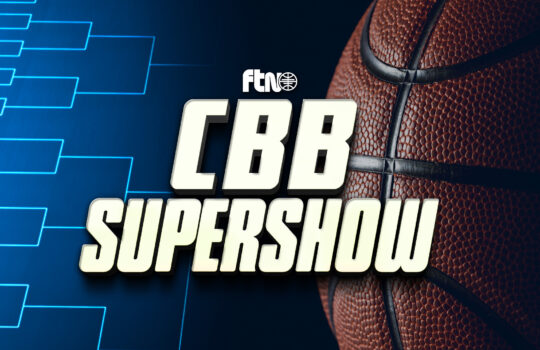

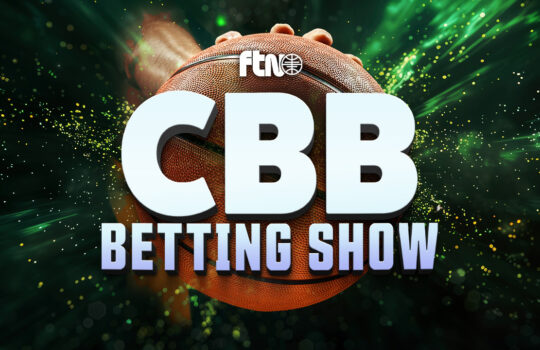











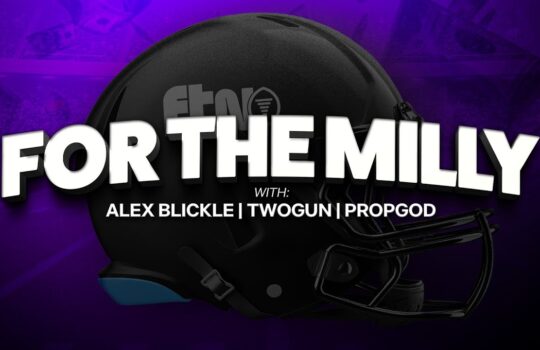






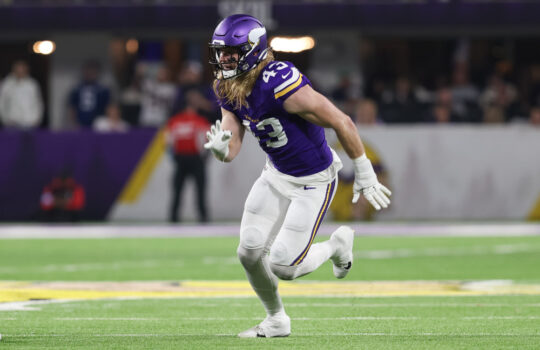



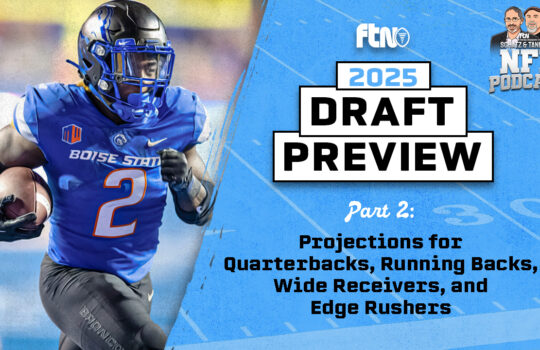

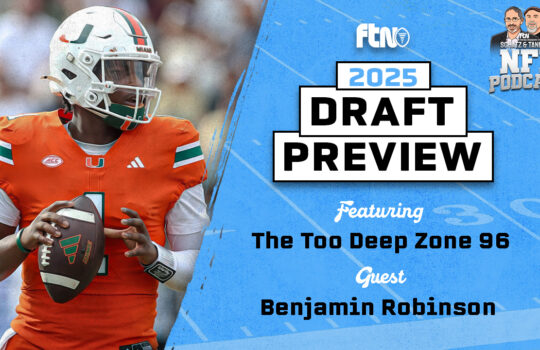
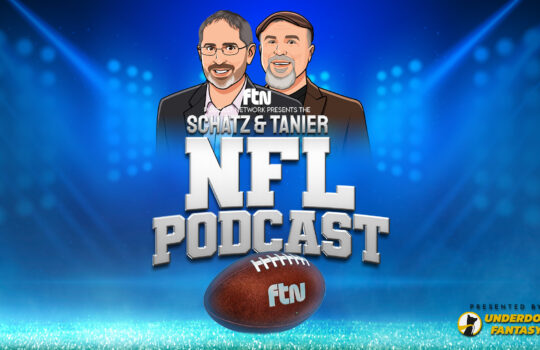




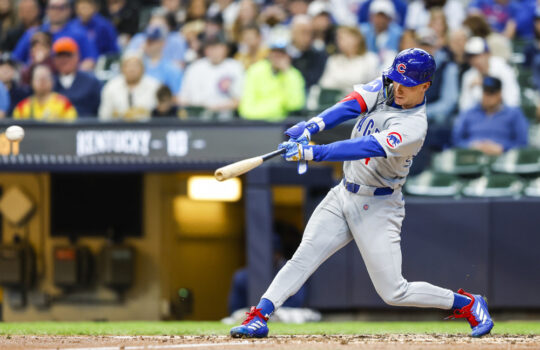



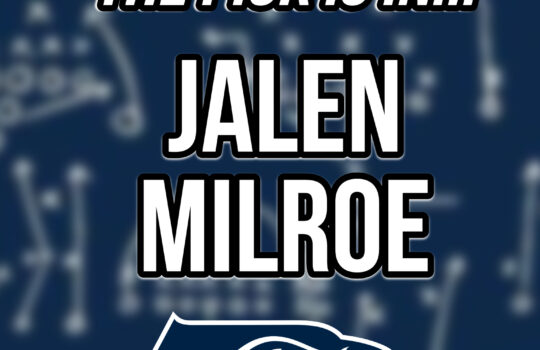

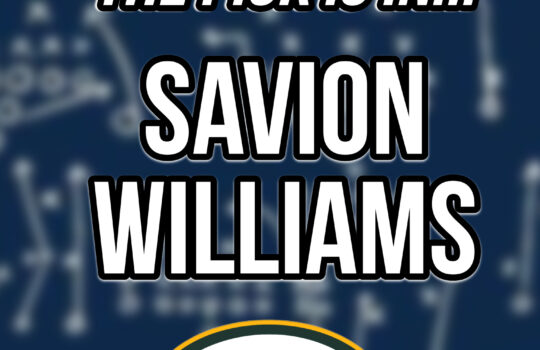
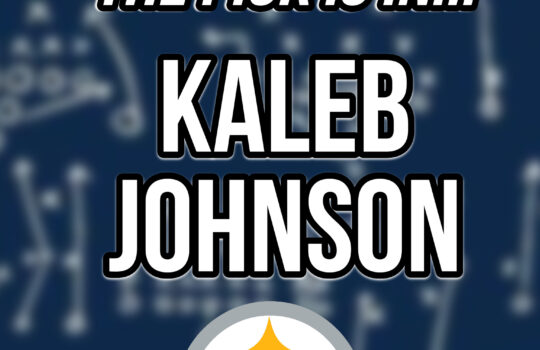

 New York Jets
New York Jets  New England Patriots
New England Patriots 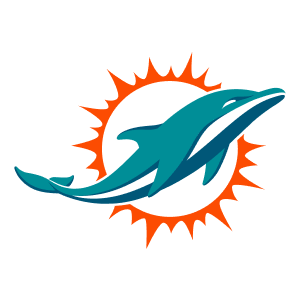 Miami Dolphins
Miami Dolphins  Buffalo Bills
Buffalo Bills  Pittsburgh Steelers
Pittsburgh Steelers  Cleveland Browns
Cleveland Browns  Cincinnati Bengals
Cincinnati Bengals 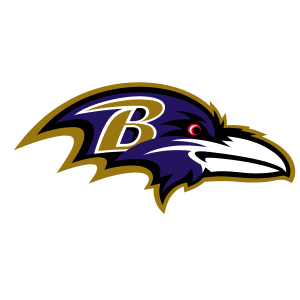 Baltimore Ravens
Baltimore Ravens 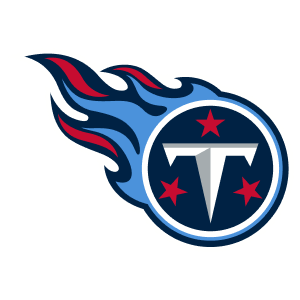 Tennessee Titans
Tennessee Titans  Jacksonville Jaguars
Jacksonville Jaguars  Indianapolis Colts
Indianapolis Colts  Houston Texans
Houston Texans  Las Vegas Raiders
Las Vegas Raiders 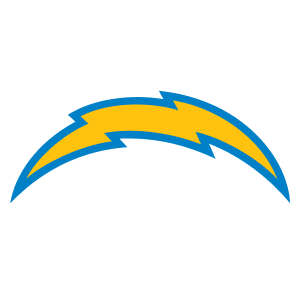 Los Angeles Chargers
Los Angeles Chargers  Kansas City Chiefs
Kansas City Chiefs 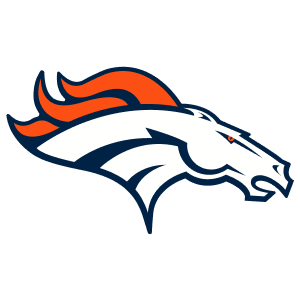 Denver Broncos
Denver Broncos  Washington Commanders
Washington Commanders  Philadelphia Eagles
Philadelphia Eagles 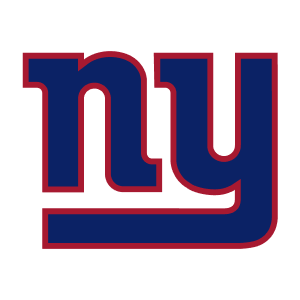 New York Giants
New York Giants  Dallas Cowboys
Dallas Cowboys 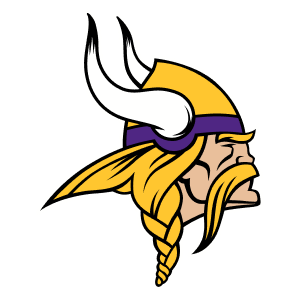 Minnesota Vikings
Minnesota Vikings 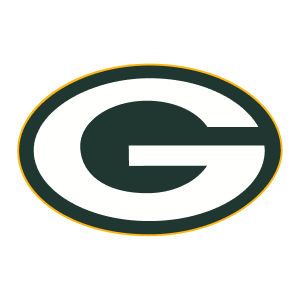 Green Bay Packers
Green Bay Packers 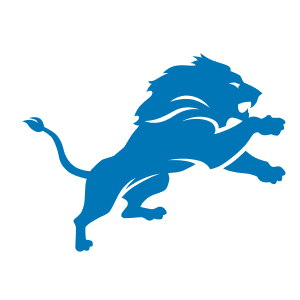 Detroit Lions
Detroit Lions 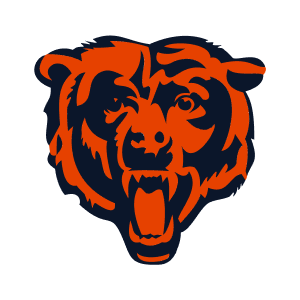 Chicago Bears
Chicago Bears 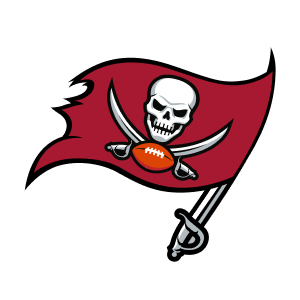 Tampa Bay Buccaneers
Tampa Bay Buccaneers  New Orleans Saints
New Orleans Saints 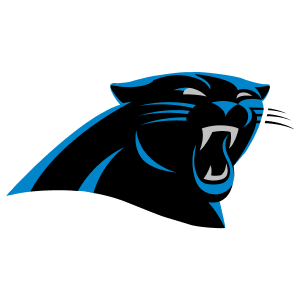 Carolina Panthers
Carolina Panthers 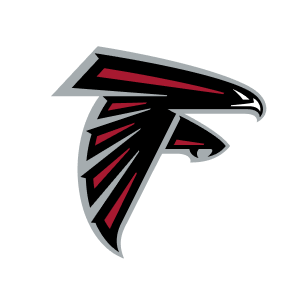 Atlanta Falcons
Atlanta Falcons 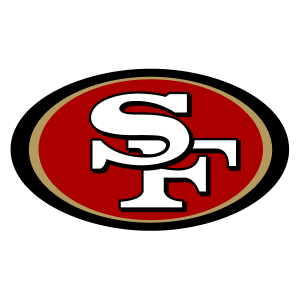 San Francisco 49ers
San Francisco 49ers 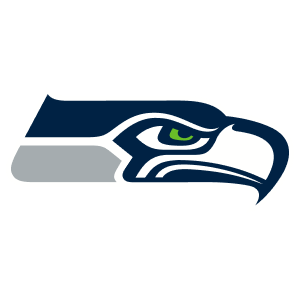 Seattle Seahawks
Seattle Seahawks  Los Angeles Rams
Los Angeles Rams  Arizona Cardinals
Arizona Cardinals 
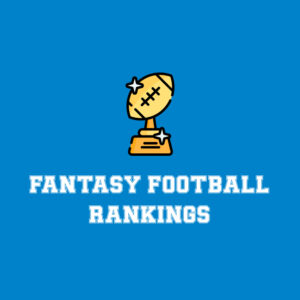
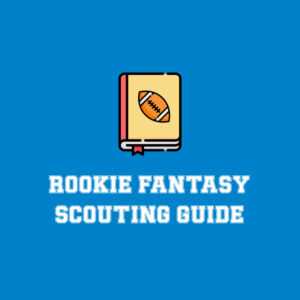
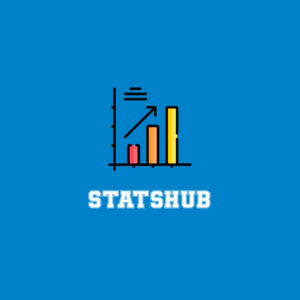
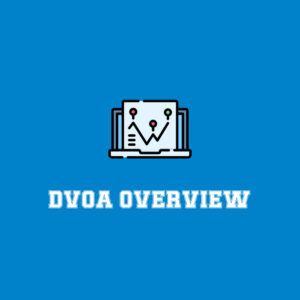




 Boston Celtics
Boston Celtics  Brooklyn Nets
Brooklyn Nets 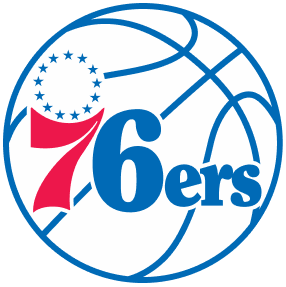 Philadelphia 76ers
Philadelphia 76ers  New York Knicks
New York Knicks  Toronto Raptors
Toronto Raptors  Chicago Bulls
Chicago Bulls  Detroit Pistons
Detroit Pistons  Milwaukee Bucks
Milwaukee Bucks  Cleveland Cavaliers
Cleveland Cavaliers  Indiana Pacers
Indiana Pacers  Orlando Magic
Orlando Magic  Atlanta Hawks
Atlanta Hawks  Charlotte Hornets
Charlotte Hornets  Miami Heat
Miami Heat  Washington Wizards
Washington Wizards  Denver Nuggets
Denver Nuggets 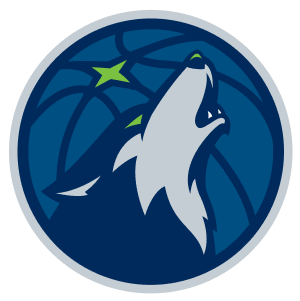 Minnesota Timberwolves
Minnesota Timberwolves  Oklahoma City Thunder
Oklahoma City Thunder  Portland Trail Blazers
Portland Trail Blazers  Utah Jazz
Utah Jazz  LA Clippers
LA Clippers  Golden State Warriors
Golden State Warriors  Los Angeles Lakers
Los Angeles Lakers  Phoenix Suns
Phoenix Suns  Sacramento Kings
Sacramento Kings  Dallas Mavericks
Dallas Mavericks  Houston Rockets
Houston Rockets  Memphis Grizzlies
Memphis Grizzlies  New Orleans Pelicans
New Orleans Pelicans  San Antonio Spurs
San Antonio Spurs 

